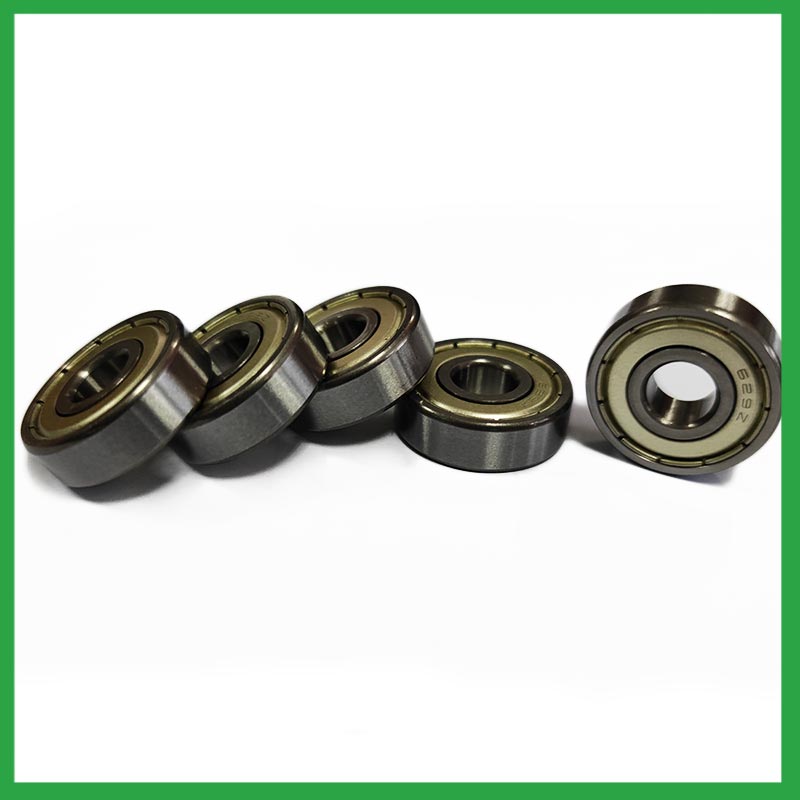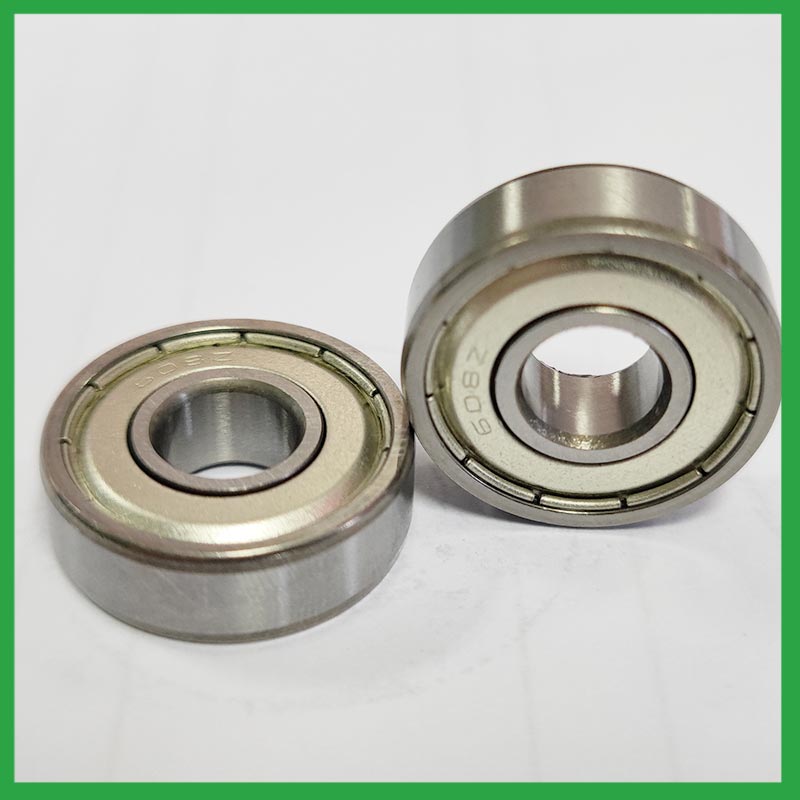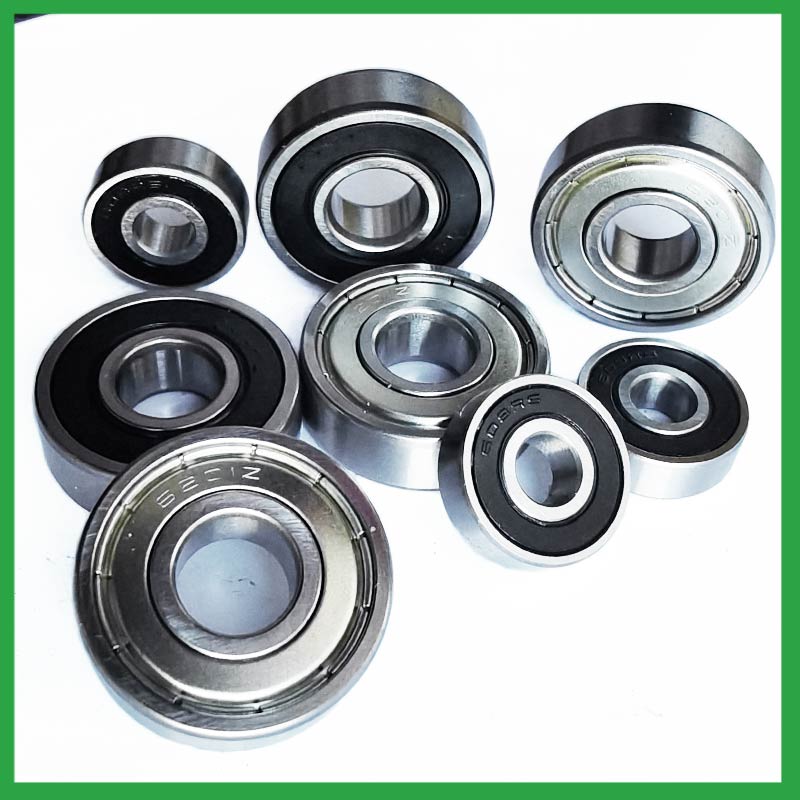PRODUCTS
CONTACT US
Ningbo Nide International Co., Ltd.
一一
· Contact person:Jack Zeng
· Mob/Whatspp/WeChat:0086-13738869026
· Email:emarketing@nide-group.com;marketing4@nide-group.com
· Add:No. 169, Wohushan Road, Daqi Subdistrict, Beilun District, Ningbo, China

Nide team could manufacture ball bearing as per customer’s drawing and samples.
If customer only has samples, we could also design drawing fo r our customer.
We also provide customized service.
Our ball bearing is widely applied the different industrials.
Ningbo Haishu Nide International Co., Ltd is located in Ningbo, Zhejiang Province. Established in 2010, it is a rapidly growing international enterprise. With advanced industrial hubs, complete supply chains, and convenient transportation advantages, combined with a professional team with rich experience in motor manufacturing, we specialize in exporting various bearings to various parts of the world. Our factory has advanced production equipment and testing instruments to ensure that all goods are perfect when received by our customers.
We adhere to strict quality control principles and excellent service. Our main products include commutator,carbon brush,magnet,motor cover and lamination,thermal protector,fan,shaft, etc. Our products are widely used in fields such as electric bicycle motor,fan motor,servo motor,washing machine motor,single and three phase induction motor,BLDC motor,water pump motor,electric automotive motor. With the rapid development of the company, we have gained a good reputation and established long-term business relationships with many customers. So far, Nide has provided products to customers in over 50 countries.

| Parameter | Information |
| Product Name | grooved ball bearing |
| Place of Origin | Ningbo,Zhejiang |
| Brand Name | Nide |
| Material | ceramics, etc. |
| Type | Ball |
| Warranty | 3months-1year |
| Port | Ningbo/Shanghai |
| Application | chemical equipment, etc. |
| Size(mm) | customize |
| Color | gray+customized |
| Precision Rating | as per customer's requirement |
| Certification | ISO 9001 Certification,CE-stator coil forming machine,CE-stator coil winding inserting machine,etc |
| Feature | Low Noise,High speed...etc |
| Packaging Details | Suitable for sea transportation |
| Service | one-stop service |
| Model Number | ball bearing |
| Supply Ability | 100000-500000 Piece/Pieces per Month |
| Lead time (days) | 15-20 (To be negotiated) |
Please note: The above table data is for reference only. For specific information, please contact us.
grooved ball bearing have the advantages of high efficiency,compactness,lightweight,durability, and high load, and are used in main motion mechanisms and components, such as resistors,tires,transmission shafts, different motion mechanisms and accessories of airplanes and motorcycles.
During the installation process, pollution from dirt and wear media should be prevented;
Temperature and humidity should be controlled to avoid excessive temperatures during startup and operation;
It should be operated and lubricated in the correct reverse direction to avoid unnecessary damage.
Ball bearings have many advantages, making them highly competitive in the market.
Firstly, they are very durable and have good wear performance, making their service life longer than many other types of bearings.
Secondly, they are easy to install and can provide low friction performance in various applications.
Thirdly, they require a relatively low level of maintenance, making them cost-effective.
In addition, compared to many other types of bearings, their purchase cost is relatively low, making them an economical choice.




grooved ball bearing---FAQs Guide
2.Are there ongoing research and development efforts aimed at improving grooved ball bearing materials, designs, and lubrication techniques?
3.What is the role of grooved ball bearing in reducing friction and wear in automotive applications, such as wheel hubs and transmissions?
4.How do cage materials and designs impact grooved ball bearing performance and stability?
5.What maintenance practices are recommended to extend the lifespan of grooved ball bearing and prevent premature failure?
6.How do grooved ball bearing handle radial loads, axial loads, and combined loads, and what are their load-carrying capacities?
7.How do different grooved ball bearing designs, such as deep groove, angular contact, or thrust bearings, cater to specific applications?
8.Are there grooved ball bearing designed for extreme temperature environments, such as cryogenic or furnace applications?
9.Can grooved ball bearing operate in high-temperature environments like industrial ovens or furnaces, and how are they protected from heat-related damage?
10.Are there specific grooved ball bearing designed for applications in the aerospace and aviation industries, and what standards do they adhere to?
1.How do grooved ball bearing provide smooth and controlled motion in various mechanical systems, such as conveyor belts or automobiles?
In essence, grooved ball bearing operate on the principle that it's far more efficient to roll over surfaces than to slide, thereby significantly reducing friction and facilitating smooth movement of machinery parts.
2.Are there ongoing research and development efforts aimed at improving grooved ball bearing materials, designs, and lubrication techniques?
A custom grooved ball bearing can satisfy almost any customer’s needs. Your application may need a needle roller or ball bearing, a radial or angular contact design, a plain carbon steel bearing with anti-corrosion coatings or stainless steel, a thrust bearing or a spherical bearing, tight or loose radial play, sealed or non-sealed designs
3.What is the role of grooved ball bearing in reducing friction and wear in automotive applications, such as wheel hubs and transmissions?
When a load is applied to a ball bearing, the grooved ball bearing roll freely between the inner and outer rings. This rolling action significantly reduces friction compared to sliding contact, resulting in smoother rotation and reduced wear.
4.How do cage materials and designs impact grooved ball bearing performance and stability?
As the core component of rotating machinery, the performance and reliability of high-precision grooved ball bearing directly affect the overall performance and life of the machine and instrument . The increase of the rotational speed will aggravate the collision and friction of the cage, which will lead to the decrease of the rotational stability of the cage. The unstable movement of the cage could in turn lead to more severe collision and wear, thus reducing the life and reliability or even the destruction of the bearing.
Therefore, it is very necessary to study the cage stability to guarantee the stable operation of bearings. However, the dynamic characteristics of the cage is very complex. Parameters such as load, rotational speed and lubrication may affect its kinematic and tribological conditions, which leads to the change of its motion behavior.
5.What maintenance practices are recommended to extend the lifespan of grooved ball bearing and prevent premature failure?
Proper handling and installation of grooved ball bearing is essential to preventing premature failure. Ensure that bearings are stored and transported in a clean, dry, and vibration-free environment. During installation, ensure that bearings are properly aligned, and torque is applied correctly.

6.How do grooved ball bearing handle radial loads, axial loads, and combined loads, and what are their load-carrying capacities?
The type of bearing used also varies between these loads. While deep-groove grooved ball bearing are better equipped to handle radial loads, thrust ball bearings are designed for axial loads. However, it's essential to note that most bearings, such as angular contact ball bearings, can handle both radial and axial loads.The Bearing Static Capacity, Co, is the maximum load that can safely be applied to a non-rotating bearing that will not cause subsequent bearing operation to be impaired. It is based on calculated contact stress at the center of the most heavily loaded rolling element where it contacts the Inner Race.
7.How do different grooved ball bearing designs, such as deep groove, angular contact, or thrust bearings, cater to specific applications?
Deep groove grooved ball bearing: Deep groove ball bearings are the most common type. They can handle both radial and axial loads. Angular contact ball bearings: Angular contact ball bearings have higher than average internal axial clearance. They can handle axial loads in one direction and moderate radial loads.
8.Are there grooved ball bearing designed for extreme temperature environments, such as cryogenic or furnace applications?
High temperature grooved ball bearing use specialized lubricants to stand up to high temperatures. Grease-packed bearings are pre-filled with fluorine grease for high temperatures, while YS and SJ bearings use molybdenum disulfide (MoS2) solid lubricant to withstand temperatures up to 350°C and 400°C respectively.
9.Can grooved ball bearing operate in high-temperature environments like industrial ovens or furnaces, and how are they protected from heat-related damage?
grooved ball bearing are capable of working at temperatures up to +842°F (+450 °C). Special lubricants, seals and coatings make this possible by protecting the ball bearings from heat damage.
10.Are there specific grooved ball bearing designed for applications in the aerospace and aviation industries, and what standards do they adhere to?
Airframe control grooved ball bearing are specialized bearings tailored for aircraft structures, particularly control systems and surfaces. Designed for low-speed oscillatory applications, they offer precision and support, effectively managing misalignments and flight-induced stresses.
Airframe Control bearings are lightweight, corrosion-resistant, grease-lubricated, and are sealed on most occasions. They come in precision grades for running accuracy.


